
1. Introduction
As we look back on the key market events in 2023, we saw the collapse of several U.S. banks, 11th hour aversion of the U.S. government shutdown, U.S. second credit rating downgrade, China real estate defaults and others.
These events shook global stocks and bonds markets. Nevertheless, the world largest U.S. economy fared better than many expected as the Fed managed to rein in inflation without causing a recession on the back of healthy economic fundamentals. Our contrarian soft landing view back in December 2022 now looks like a base case most in Wall Street have started embracing. Read ahead as we look at the opportunities and risks that lie ahead for the upcoming 2024 and share how you can position your investments to improve returns & manage risk better.
2. Three Important Market Drivers for 2024
2.1 Strong economic indicators signal a soft landing
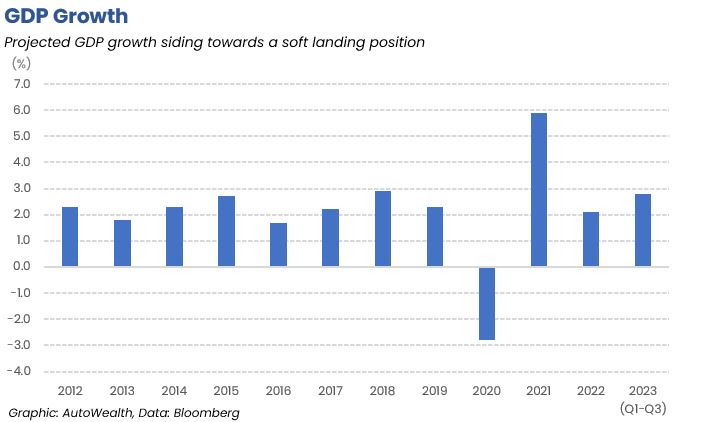
The U.S. economy defied market expectations with much stronger than expected economic growth. In 3Q 2023, GDP grew at an annual pace of 5.2%, bolstered by strong consumer demand despite higher interest rates and inflationary pressures.
The Fed’s latest Summary of Economic Projections published in December 2023 forecast GDP to grow at 1.4% in 2024. We continue to be confident of a “soft landing” outlook characterised by smaller & healthier economic growth and price stability with inflation gliding towards the Fed’s 2% target.
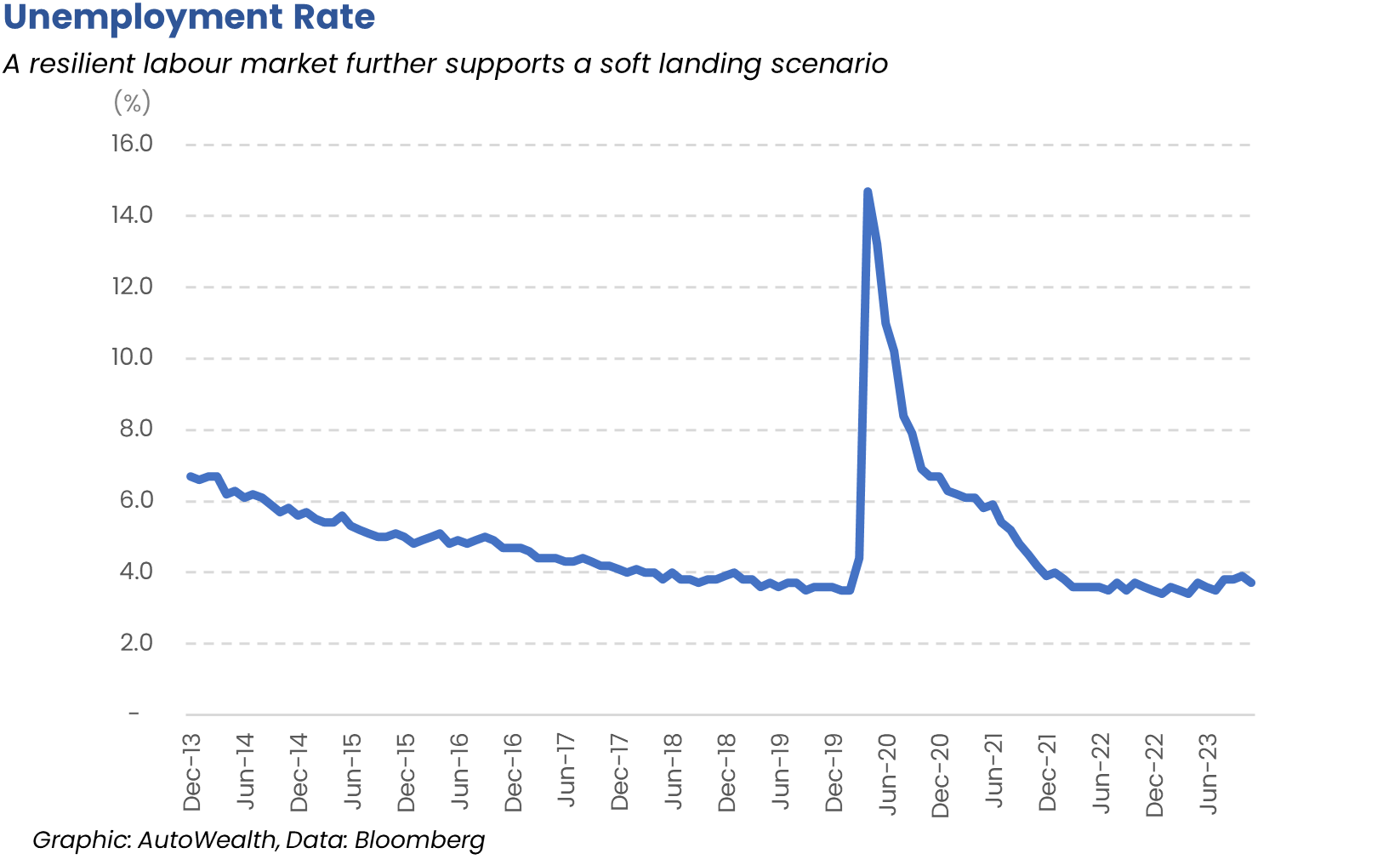
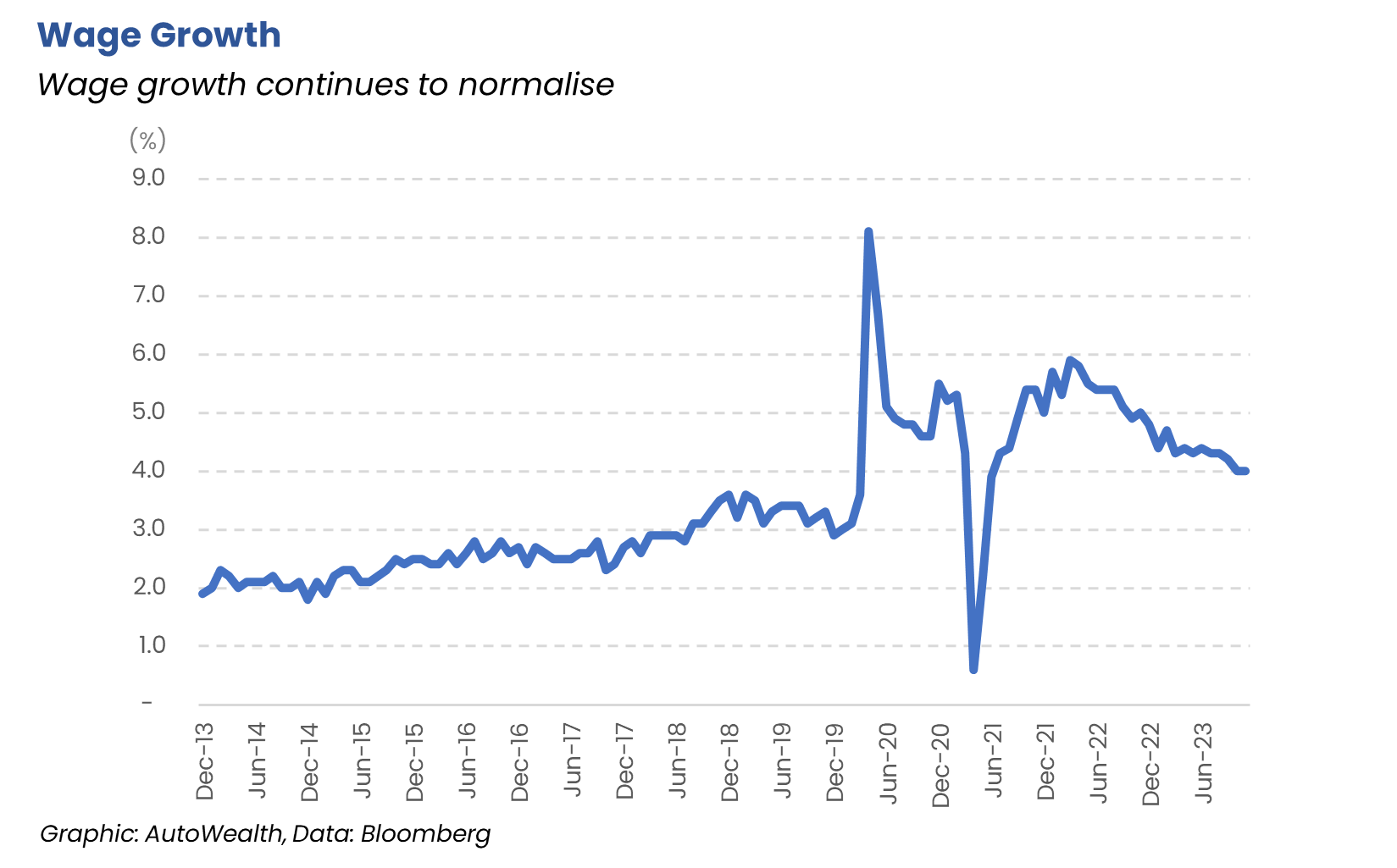
The U.S. labour market remains resilient as the unemployment rate stood at 3.7% in November 2023. We expect a cooler & more balanced labour market characterised by positive but more sustainable wage growth that is more consistent with the Fed’s 2% inflation target.
Overall, we maintain our goldilocks economic view, which seemed contrarian when we first made that call in late 2022 but is now getting more consensus amongst Wall Street economists. With a conducive economic backdrop, we now turn our focus to what we believe will be the most important market driver for 2024.
2.2 Expect broad rate cuts in 2024
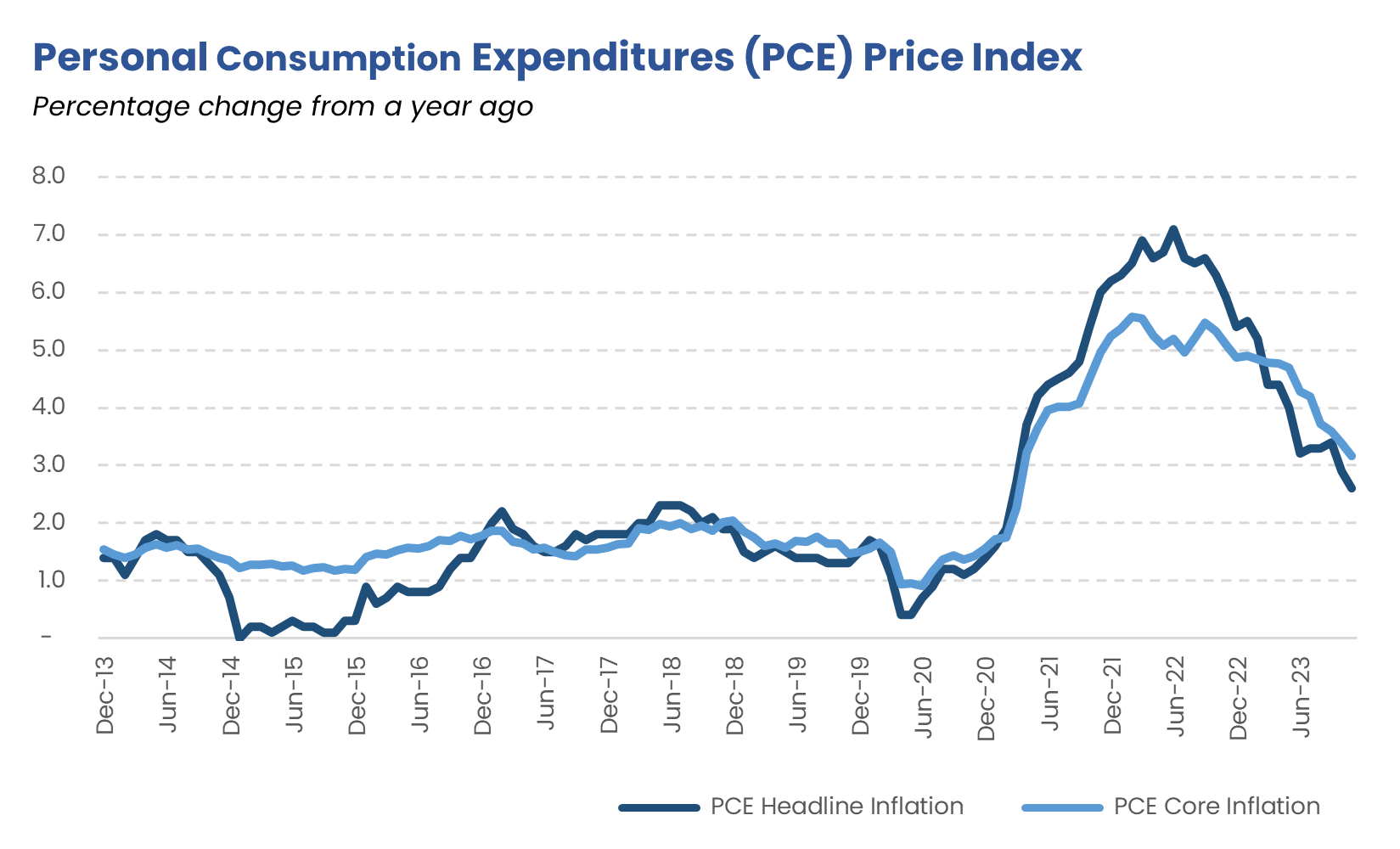
Headline and core PCE inflation have cooled significantly since the start of the year, declining from 5.5% to 2.6% and 4.9% to 3.2% respectively. We expect new incoming inflation data to continue to reinforce continuous progress towards the Fed’s 2% target, driving the Fed to loosen its restrictive monetary policy and balance against the risk of over-tightening.
In the latest Summary of Economic Projections, the Fed projects a 4.6% median Fed funds rate at end 2024, implying 0.75% of rate cuts, which will likely come in three 0.25% rate cuts over the course of 2024. Wall Street economists forecast the Fed will need to cut more, at least 4 rate cuts, with the first as early as March 2024.
We cannot emphasise more the importance of positioning your investments for the normalizing of restrictive monetary policy. This positioning will be way more important than it is to predict accurately whether we will see 3 or 4 or even 5 rate cuts. Incoming series of disinflation data accompanied by consequential series of rate cuts announcements will provide multiple catalysts for stocks and bonds markets in 2024. Barring unforeseen developments, we see probable opportunity in 2024 to achieve double-digit returns. A likely scenario that occurs once in ten years.
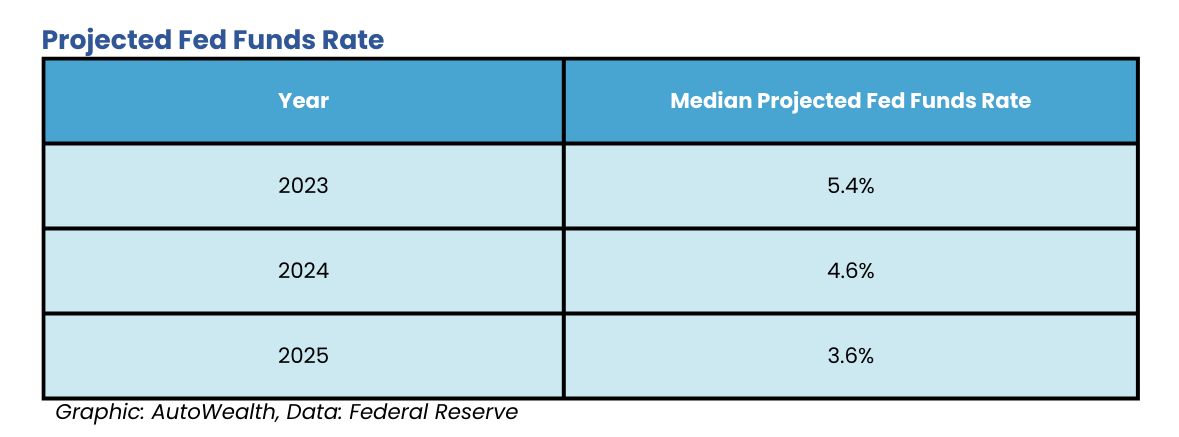
In any bullish environment, it’s always prudent to keep an eye on irrational exuberance, i.e. forming of market bubbles. That is something we look at closely in the next section.
2.3 Attractive market valuations supported by consumer spending and corporate earnings
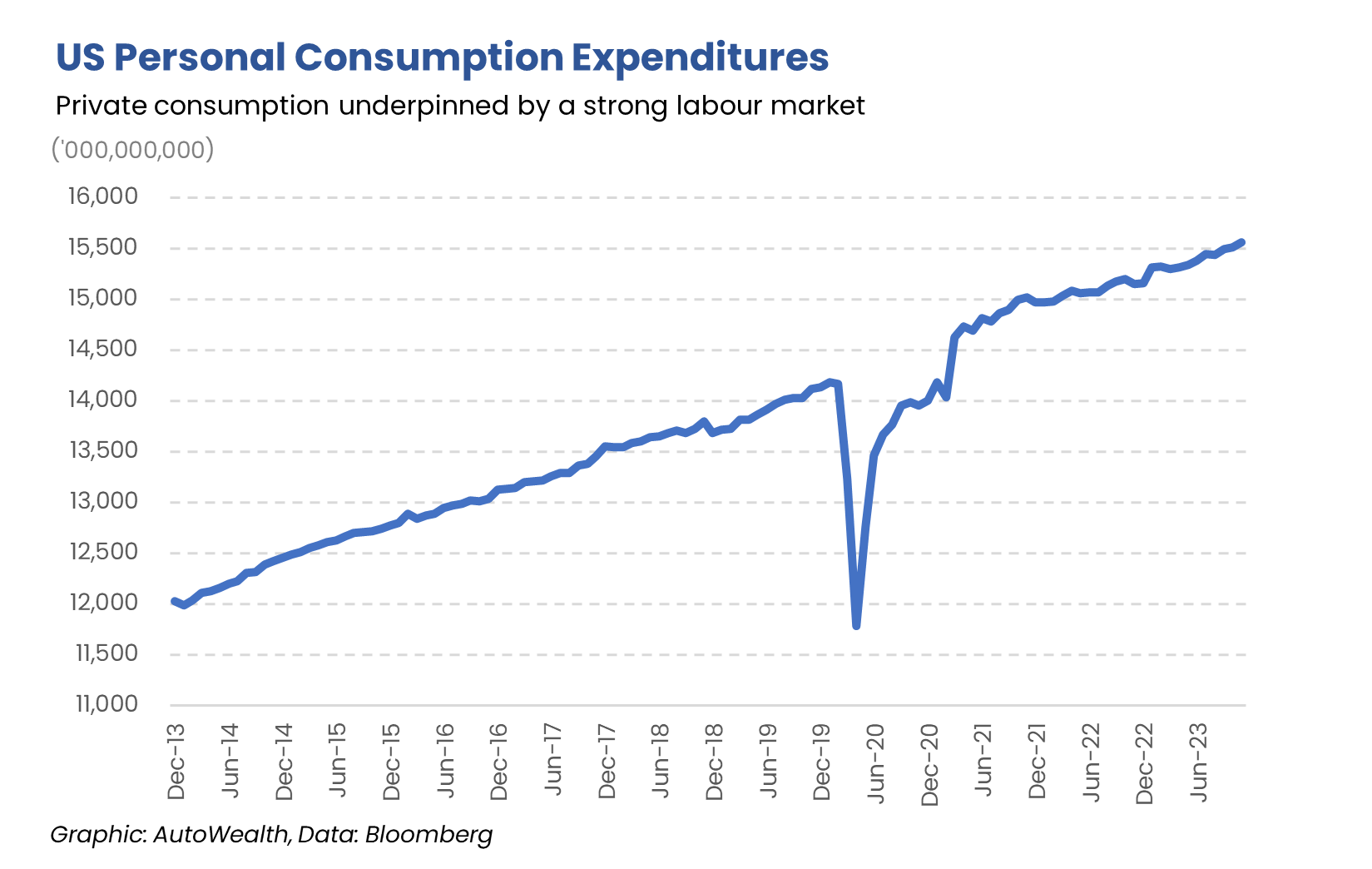
Consumption makes up two-thirds of the U.S. economy. Unfazed by inflationary pressures and recession fears, personal consumption expenditure remains strong through 2023, accounting for over half of the extraordinarily strong economic activity in 3Q 2023. Underpinned by our view of a cooler & more balanced labour market, we expect consumer spending to continue growing positively at a more balanced pace.
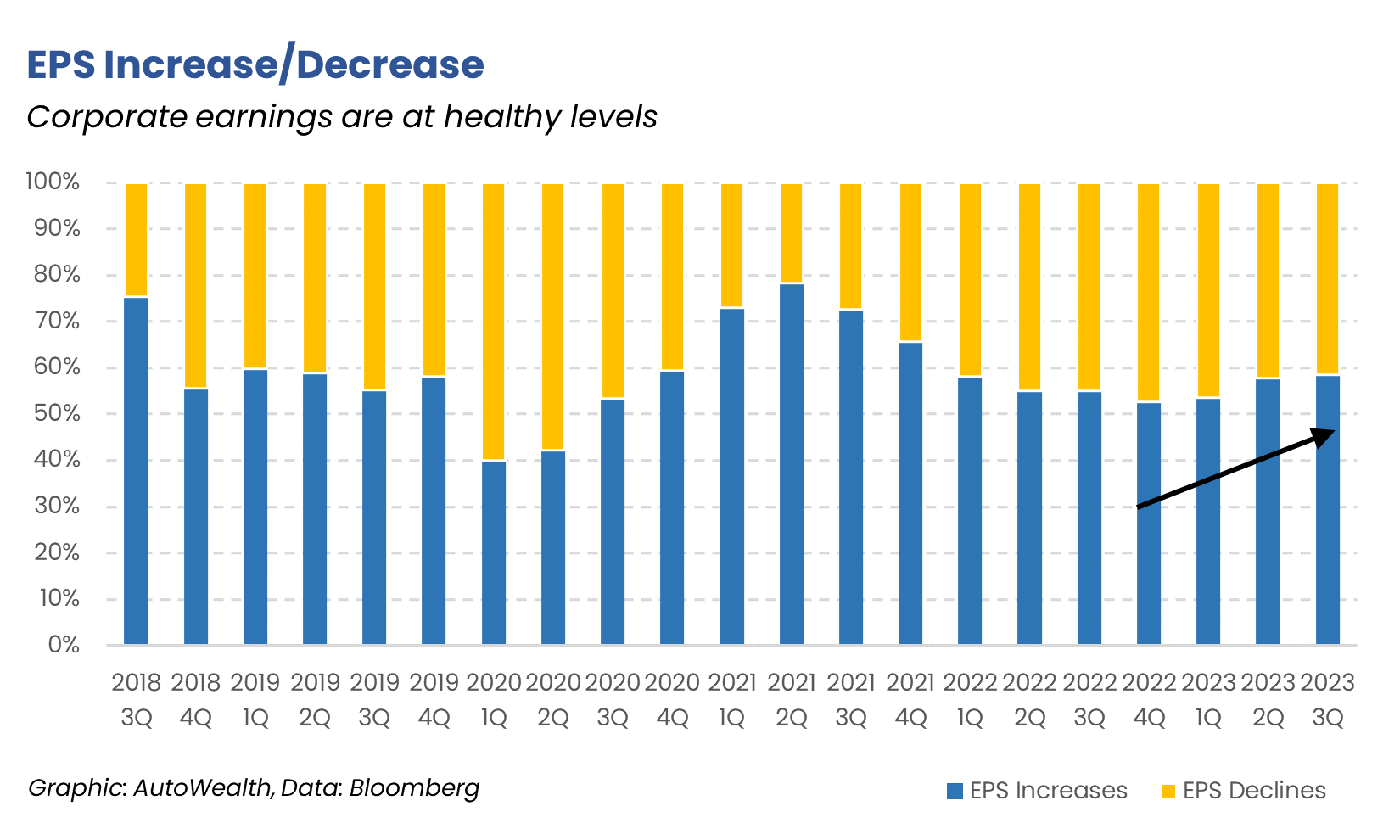
3Q 2023 earnings seasons were very positive, with S&P 500 companies reporting median 6.6% year-on-year earnings growth. As we transition to a new monetary policy cycle characterised by a lowering interest rates environment in 2024, we expect strong corporate earnings and valuations re-rating₁ to drive potentially exceptional double-digit returns in stocks & bonds markets.
Financial markets’ willingness to pay for relatively higher asset prices in anticipation of higher-than-normal returns.
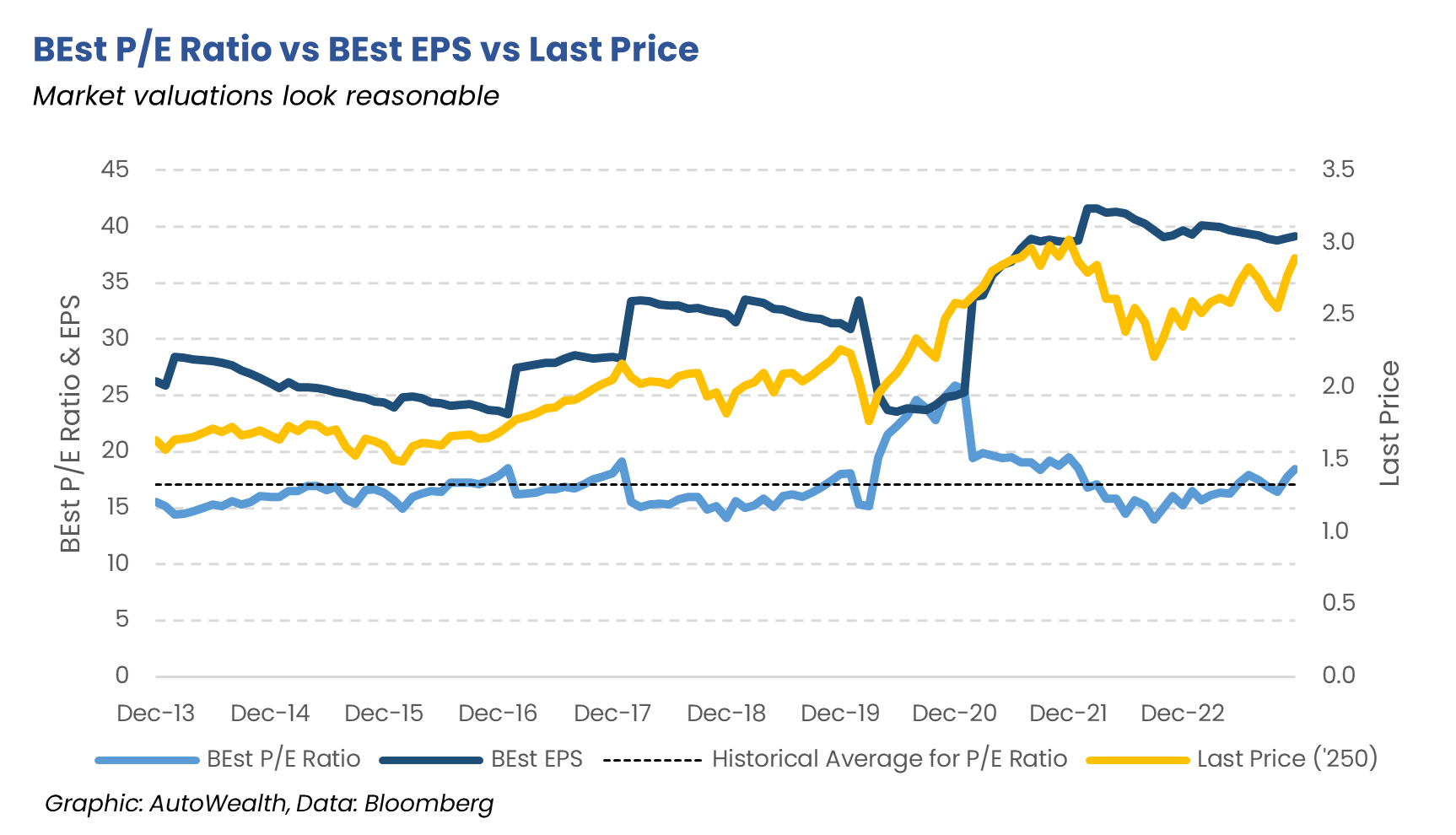
Over the last 10 years, the forward-looking P/E ratio of global stocks, as represented by the MSCI All Country World Index, was 17.1x. Currently, global stocks trade at a forward-looking P/E ratio of 18.4x, suggesting that valuations remain fair and are nowhere near a market bubble.
3. Three Risks to keep a lookout for
3.1 Polarisation of the U.S. Congress
The government shutdown episodes in 2023 have demonstrated the rising polarisation between the Republicans & Democrats and resulted in a Fitch ratings downgrade and heightened market volatility. While the U.S. House and Senate have managed to temporarily avert a government shutdown by passing a stopgap spending bill, a partial shutdown looms again in January 2024 as the second temporary spending bill expires on 19 January 2024 for some federal agencies and 2 February 2024 for others. The U.S. Presidential Election in November 2024 and highly polarised electorates creates further psychological uncertainty, particularly if the results happened to be too close to call or disputed. Nevertheless, we view this risk as manageable as cool heads will eventually prevail over chaos.
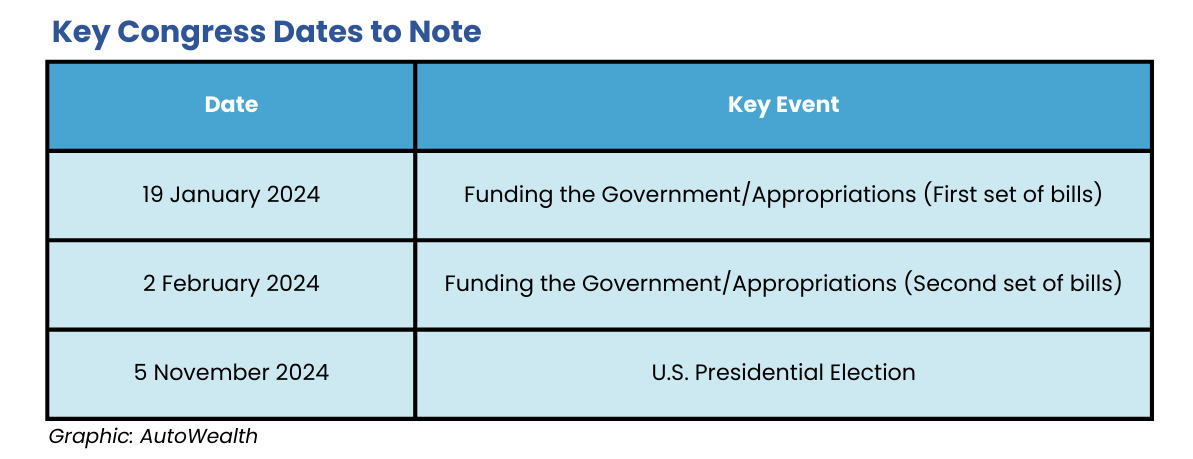
3.2 Geopolitical conflicts
Ongoing geopolitical conflicts like the U.S.-China sanctions escalation, the Russia-Ukraine war and the Israel-Hamas war continue to pose escalation risks beyond their borders, overhanging uncertainty and heightening market volatility. While we cannot completely rule out targeted sabotage or an escalation into a broader regional conflict that involves oil-producing nations like Iran, possibly causing a spike in oil & energy prices and consequently pushing inflation higher and disrupting the loosening monetary policy cycle, we believe this probability is low given the current & foreseeable developments thus far.
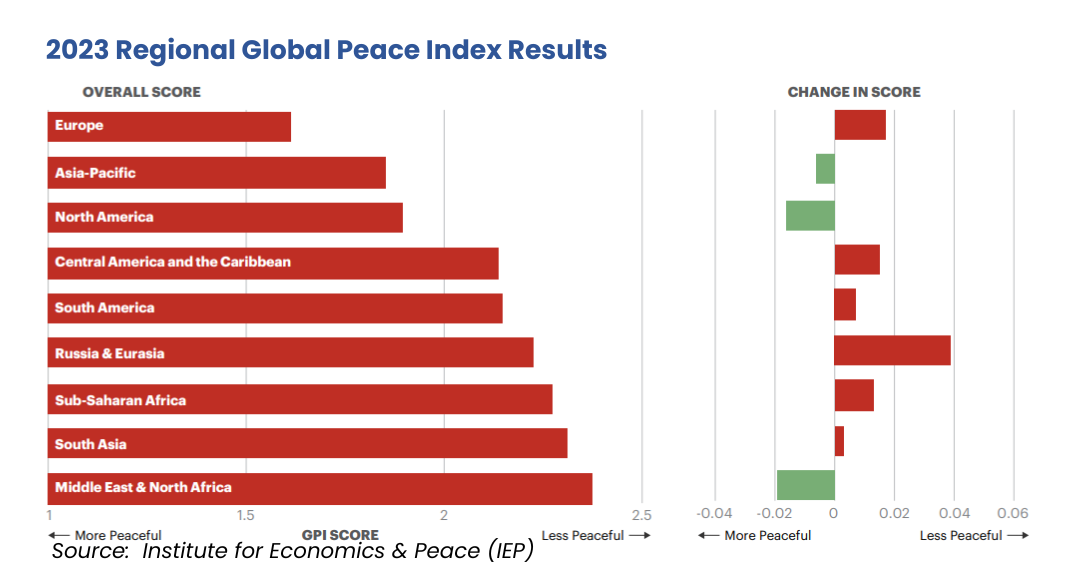
3.3 The eroding dominance of the U.S. dollar
For centuries, the US dollar has long been the pre-eminent reserve currency for trade, international transactions and financial reserve holdings. Gradually, some countries have turned to alternative currencies such as the Chinese Renminbi for trade. The macro trend of de-dollarisation has significant implications on international trade dynamics & monetary policy and may heighten fears in financial markets. However, it is important to note that this structural shift will be a gradual and long-term trend and its impact on foreign exchange & treasury bond markets will tend to be small and gradual.
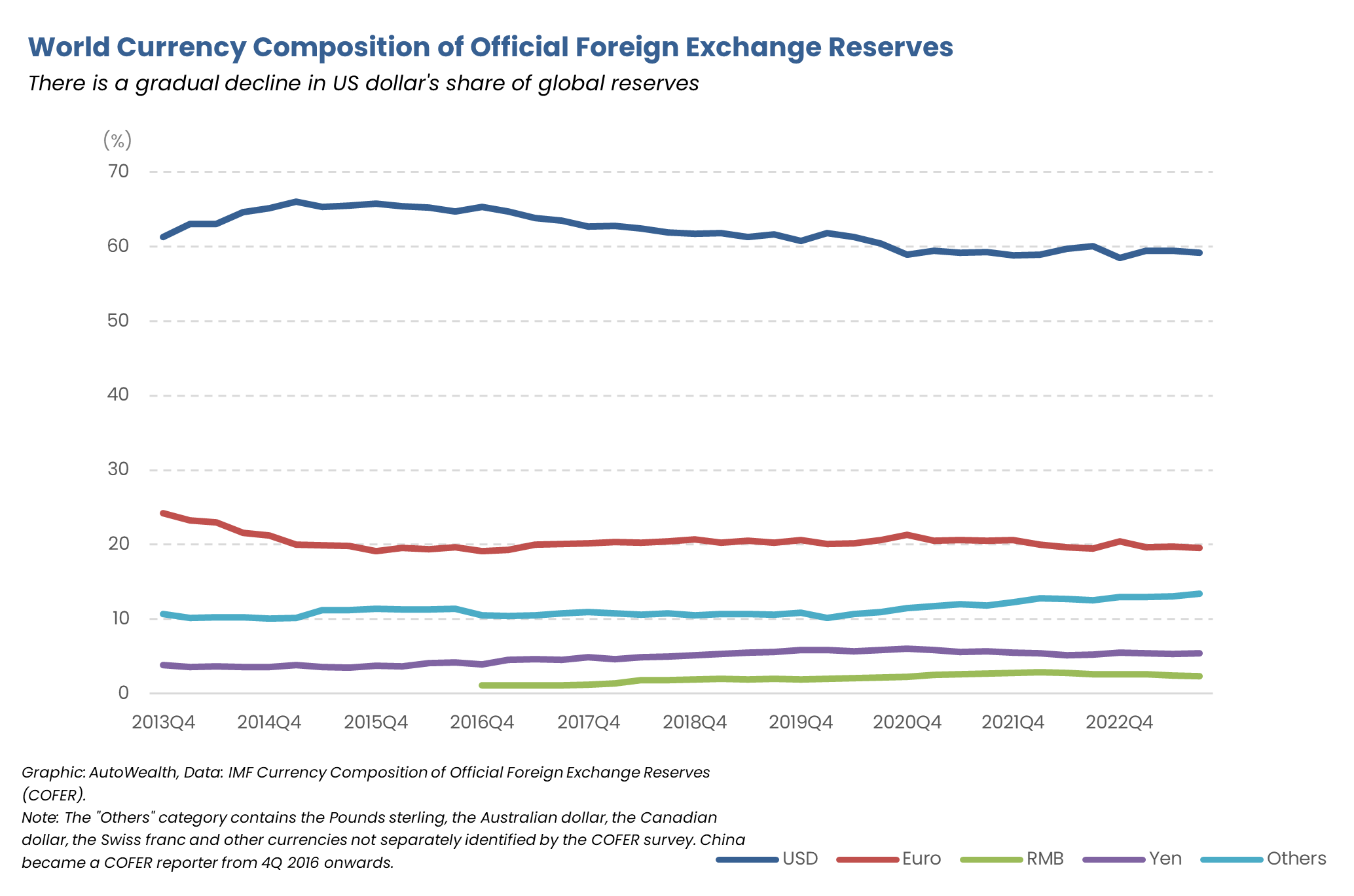
4. How to position your investments in 2024
Our 2024 outlook reflects the collective wisdom of our investment team in the upcoming year. With a goldilocks economic environment characterised by healthier pace of economic growth, continued progress towards price stability, cooler & more balanced labour market with more sustainable wage growth and most importantly rate cuts to loosen the restrictive monetary policy, you should be adequately invested to capitalise on the market opportunity to achieve potential double-digit returns.
If you have heeded some misguided calls and tactically reduced portfolio risk level or temporarily shifted your investments into treasury bills in 2023, you would have missed out the forceful rebound & accompanying double-digit returns. As a reference point for illustration, our AutoWealth Long Term Growth Portfolio (80% stocks, 20% government bonds) achieved 15.7% returns as at 15 December 2023 year-to-date. Now is the time, better late than never, to correct these mistakes and reposition your investments back to its long run portfolio risk level.
5. How to enhance returns and manage risks better
No one can predict markets consistently with precise accuracy. The magical crystal ball does not exist. Therefore, we urge clients to take a long-term view and adopt sound investment habits. Here are 3 good investment habits that can significantly enhance returns and manage risks better:
5.1 Stay disciplined instead of timing the market
Markets are unpredictable, and attempting to forecast short-term shifts often leads to missed opportunities and unnecessary risks. Rather than trying to time short-term fluctuations, focus on the long-term potential of your investments. Dollar-Cost Averaging (DCA) is a good investment habit to cultivate. Consistently investing fixed amounts, regardless of market fluctuations, can smooth out buying prices over time, reducing the impact of market volatility and eventually, leading to higher dollar value returns.
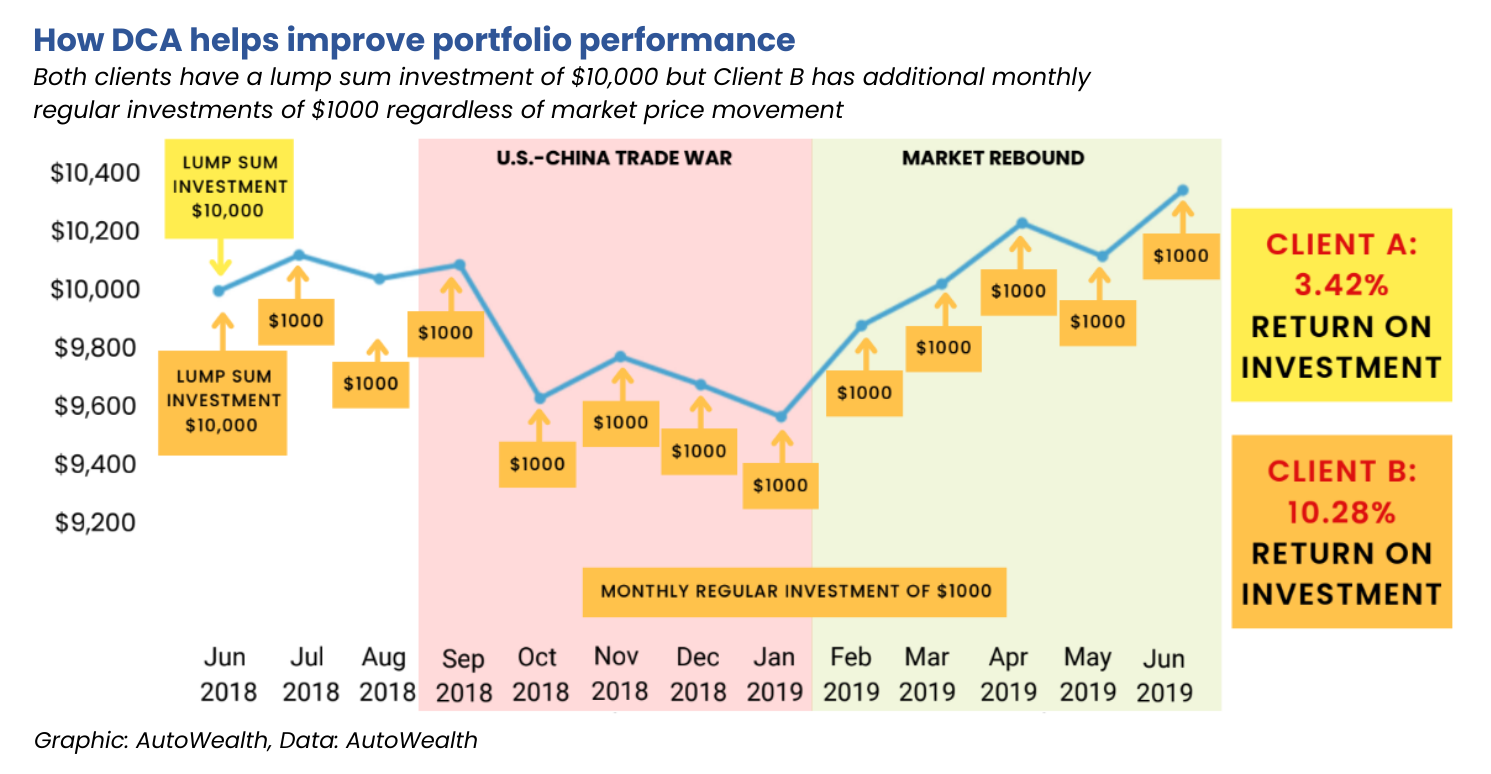
5.2 Capitalise on temporary market discounts
Market corrections statistically occur 3 to 4 times in a year. To enhance portfolio returns, we encourage clients to take advantage of these compelling temporary market discounts that occur from time to time by making ad-hoc investment top-ups, provided that market fundamentals remain positive and valuations remain reasonable.
Typically, we recommend making ad-hoc investment top-ups when there is a -5% discount in global stocks (as represented by the MSCI All Country World Index) for AW Starter portfolios and a -10% discount for AutoWealth PLUS+ portfolios.
5.3 Optimising your withdrawals
Before withdrawing from your investments, always consider tapping into available cash reserves or savings in your bank instead of your long-term investments. Over the long run, investments give you higher returns as compared to bank savings. You may be tempted to withdraw your investments after the 2022 rate hike cycle led to poor portfolio performance. But withdrawing your investments will prevent you benefiting from the forceful market rebound in 2023 as disinflation takes hold. As a reference point for illustration, our AutoWealth Long Term Growth Portfolio (80% stocks, 20% government bonds) achieved 15.7% returns as at 15 December 2023 year-to-date.













